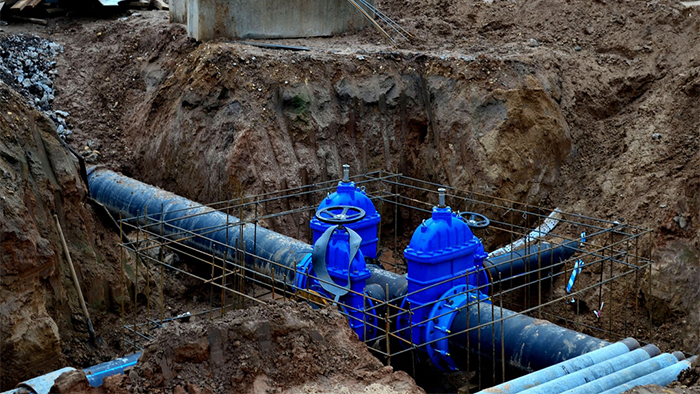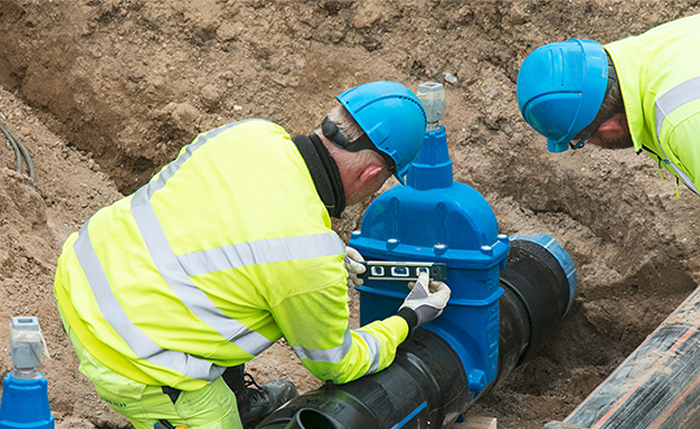- Gate valve
-
- DN1000 Extension stem double flange soft seal gate valveDIN F4 resilient seated gate valveDN450-1200 Resilient Seated Gate ValveDIN F5 resilient seated gate valveSocket connection soft seal gate valveUnderground cap soft seal gate valveBS5163 rising stem soft seal gate valveHard seal gate valveAPI slab Gate ValveStainless steel flange gate valveWafer knife gate valvePneumatic gate valveSoft seal gate valveExtension stem gate valveUL/FM fire protection groove ends gate valveRising stem forged steel gate valvecarbon steel gate valveStainless steel threaded gate valveDIN soft seal gate valveANSI soft sealing gate valve 200PSICast iron gate valveBS resilient seated gate valve
- Butterfly valve
-
- DN900 pneumatic triple eccentric hard seal butterfly valveD643H Triple Eccentric Butterfly ValveD343H Hard seal butterfly valveMulti standard EPDM seated butterfly valveSingle flange butterfly valveDN2000 Double eccentric butterfly valveFlange butterfly valveLug butterfly valveWafer butterfly valve with handleWorm gear operated butterfly valveWafer lined fluorine butterfly valveStainless steel wafer butterfly valveStainless steel flanged butterfly valveThree eccentric flange butterfly valvePneumatic flanged butterfly valvePneumatic wafer butterfly valveTriple eccentric butterfly valve wafer typeWafer butterfly valve ULC approvedInflatable seat butterfly valveHigh performance butterfly valveGrooved end butterfly valveElectric soft seal butterfly valveFlange fluorine lined butterfly valveHandle aluminum butterfly valveWorm Gear Aluminum Butterfly ValveFull PTFE lined butterfly valve wafer typeOne stem no-pin wafer butterfly valveMulti standard aluminum stem butterfly valveStainless Steel wafer Butterfly ValveAluminium handle operated lug butterfly valveLever Operated Flange Butterfly ValveButterfly valve stemButterfly valve discButterfly valve seat
- Ball valve
-
- DN1400 top-mounted eccentric semi-ball valveFlanged three-way ball valveFully welded ball valveNatural gas ball valveHigh platform flange ball valve1 PC ball valveFixed ball valvePTFE seat flanged ball valveMetal seat ball valveAPI 6D ball valve3 Piece ball valveFull Bore 3 way ball valve L-Port3 Way T-Port ball valve2PC Ball valve female thread stainless steel
- Globe Valve
-
- API Carbon Steel Globe ValveBellows Globe ValveStainless steel flange globe valveStainless steel thread S type globe valveStainless steel thread B type globe valveCast Steel Globe ValvePiston Globe ValveWCB Carbon Steel Globe Check Valveelectric motorized control stainless steel SS316 globe valveBrass Globe ValveCryogenic Globe valveHT200 Globe ValveThreaded Stainless Steel Globe ValveGG25 Globe ValveANSI API Cast Steel And Stainless Steel Globe valve
- Check valve
-
- Rubber seal check valveDN800 Slow closing check valveDN800 Rubber Disc Check ValveButterfly Buffering Check Valvecheck valve with counter weightSilent Check ValveWCB Swing check valveSwing Check ValveSingle Chip Check Valve H74WStainless Steel Wafer Check ValveSwing Start Check ValveFoot check valveAPI Swing Check ValveDIN Flange check valveSingle plate check valveLifting Check ValveBottom ValveHammer Diminish Noises Check ValveWafer Check ValveWafer dual plate check valve
- Control valve
-
- Static Balancing ValveCage Guided Sleeve Globe Control ValveDN1000 Piston Flow Regulating ValveDN1600 Electric Actuator Flow Regulating ValvePneumatic Flanged Butterfly ValvePneumatic Wafer Butterfly ValveAngle Seat ValvePneumatic gate valveElectric three-way control valveElectric sleeve control valve
- Water Meter
-
- Vertical Type Water MetersStainless steel threaded water meterPiston water meterPlastic water meterMore flow rotor dry water meterspiral vane flange water meterCI wotlman water meter with pulse outputLXCLG(R) Vertical removable element woltman cold (hot) water meterSingle flow rotor dry water meterPrepaid Token Water MeterElectromagnetic flowmeterRotary Piston Liquid Sealed Water MeterRotary Piston Liquid Sealed Water Meter
- Air valve
-
- Double ball exhaust valveDoubleair Air Valve SaudiDoubleair Air Valve Southeast AsiaDoubleair Air Valve South AmericaDouble Air ValveThreaded Air ValveSingle Air ValveTriple Functions Air ValveAutomatic Air Release ValveAutomatic release valveAutomatic exhaust valveComposite Exhaust Air ValveBrass exhaust valveDouble Ball Air Valve
- Pipe Repair & Coupling
-
- Flexible Multi-Function Pipe Coupling ZFJ-SSS Semi-Circle Pipe Repair Clamp SJW-HDuctile Iron Band Repair ClampStainless Steel Band Repair ClampDouble-Section Pipe Repair CouplingFolding Type Pipe RepairSingle-Section Multi-Function Pipe Coupling MF-SGear-Ring Type Multi-Function Pipe Coupling GR-SZBW Damping Corrugated Hose
- Dismantling Joint
-
- VSSJAFC(CC2F) Detachable Flange Transmission JointVSSJA-2(B2F) Double Flange Limited Expansion JointVSSJA-1(BF) Single Flange Limited Expansion JointVSSJA(AF) Flange Loose Expansion JointJGD-B Threaded Rubber JointZBW Damping Corrugated HoseKXT-S Flexible Dual-Spherical Rubber JointKXT Rubber Soft JointFlange Adaptor
How often is it best to overhaul the valve?
Valve maintenance cycle and general procedures
In order for the valve to operate normally for a long time, it needs to be regularly repaired and maintained. The maintenance cycle of valves and pipeline accessories is generally determined by the maintenance of the equipment used by the unit. For example, the overhaul of oil refinery equipment is once a year, and the valve is also repaired at this time. Now, with the advancement of science and technology, the application of new technologies and the improvement of maintenance methods, many oil refining and chemical enterprises have undergone valve overhaul from once a year to once every two years or once every three years, and the longest even reaches every 5 years. Second, the corresponding valve maintenance should be carried out at the same time.
Valve maintenance is generally divided into what three categories?
Valve maintenance is generally divided into three categories, as follows.
Minor repairs: clean the oil nozzle and oil cup, replace the packing, clean the valve stem and its threads, remove the debris in the valve, tighten and replace the bolts, and match the handwheel.
Intermediate repairs: including minor repairs, dismantling and cleaning parts, repairing valve bodies, grinding seals, straightening valve stems, etc.
Overhaul: Including medium repair items, replacement of valve stem, repair of brackets, replacement of springs and seals, etc.
Generally, valves repaired indoors should be disassembled and inspected and gaskets should be replaced.
The maintenance of valves is generally more common in small and medium-sized repairs.
What are the general procedures of valve maintenance?
a. Blow the outer surface of the valve with compressed air.
b. Check and note the markings on the valve.
c. Disassemble all the valves.
d. Clean the parts with kerosene.
e. Check the parts for defects. Check the strength of the valve body with the hydraulic test; check the fit between the valve seat and the valve body and the closing part and the sealing ring, and carry out the sealing test; check the thread wear of the valve stem and the valve stem nut; check the sealing of the closing part and the valve body ring; check the surface of the bonnet to eliminate burrs; check the joint surface of the flange.
f. Repair the valve body. Weld repair defects and replace sealing ring or surfacing sealing ring; conduct sealing test on the valve body and the newly replaced sealing ring, as well as the connection between the surfacing metal and the valve body; trim the flange joint surface; grind the sealing surface.
g. Repair closures. Welding repair defects or surfacing sealing surface; car polishing or grinding sealing surface.
h. Repair the stuffing chamber. Inspect and trim packing chamber; trim gland and taper at bottom of packing chamber.
i. Replace the parts that cannot be repaired.
j. Reassemble the valve.
k. Carry out the hydraulic test of the valve as a whole.
l. The valve is painted and marked according to the original record.









